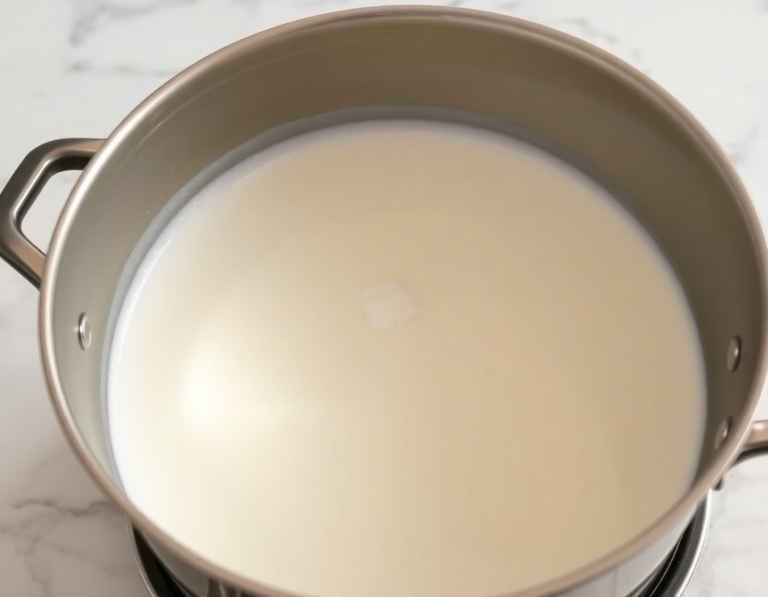Farmer’s cheese. Such a humble, yet versatile ingredient. It’s like the unsung hero of my kitchen escapades, really.
I remember the first time I tried it—creamy and unexpectedly tangy, like a surprise party for my taste buds. You can whip it into a spread or tuck it into a pastry. The possibilities are endless, and honestly, it feels like finding a hidden gem every time I use it.
What was I saying? Ah, yes—recipes!
Steps
- Pour the gallon of whole milk into a large pot and add a pinch of salt. Heat over medium heat, stirring occasionally to prevent the milk from burning.
- Once the milk begins to boil, indicated by small bubbles at the edges, turn off the heat. Stir in the juice of a large lemon and allow the milk to curdle, which may take 5 to 10 minutes.
- Line a sieve or colander with cheesecloth and pour the curdled milk through it to separate the curds from the whey. Gather the cheesecloth around the curds and squeeze out as much liquid as possible.
- Transfer the resulting farmer’s cheese to an airtight container or wrap it in plastic wrap. Store it in the refrigerator and consume within a week.

Ingredients
- 1 gallon of whole milk
- A pinch of salt
- Juice from 1 large lemon
Nutritional Values
Calories: 2368 | Total Fat: 128g | Saturated Fat: 80g | Cholesterol: 384mg | Sodium: 1568mg | Total Carbohydrate: 192g | Dietary Fiber: 0g | Total Sugars: 176g | Protein: 128g | Vitamin C: 80mg | Calcium: 4480mg | Iron: 0mg | Potassium: 5744mg
FAQ
- How long can homemade farmer’s cheese be stored?
- Homemade farmer’s cheese should be stored in the refrigerator and consumed within a week for the best quality.
- What can be added to the cheese for extra flavor?
- You can enhance the flavor by adding ingredients such as hot pepper, black pepper, jalapeños, or any other spices you enjoy before straining the cheese.
- Can I use something other than lemon juice to curdle the milk?
- Yes, white vinegar can be used as an alternative to lemon juice for curdling the milk. Some people have found that vinegar works well and imparts a mild, sweet taste without a vinegar flavor.
- What should I do if the milk doesn’t curdle immediately?
- If the milk doesn’t curdle right away, try adding more lemon juice or vinegar until the milk separates into curds and whey. Different varieties of lemons or acids can have varying acidity, affecting the curdling process.
- Is it possible to use different types of milk for this recipe?
- Yes, you can experiment with different types of milk, such as goat milk, to make variations like goat cheese. Just be aware that the texture and flavor may vary slightly depending on the milk used.
Tips
- Prevent Scorching: Stir the milk occasionally as it heats to avoid it burning and sticking to the pot’s bottom.
- Adjust Acidity: If the milk doesn’t curdle after adding lemon juice, try adding more lemon or substitute with white vinegar for better results, as acidity levels can vary.
- Flavor Customization: Enhance your cheese by mixing in spices like black pepper or jalapeños before straining, allowing for a personalized flavor profile.
- Repurpose Whey: Don’t discard the whey; it can be used in smoothies, soups, or even as a nutritional drink.
Equipment
- Cheesecloth – This is essential for straining the curds from the whey.
- Large Pot – While most people have pots, if you need a specific size for a gallon of milk, you might consider purchasing one.
- Sieve or Colander – A fine-mesh sieve or colander is needed for draining the curd. If you don’t have one, it might be necessary to purchase.

